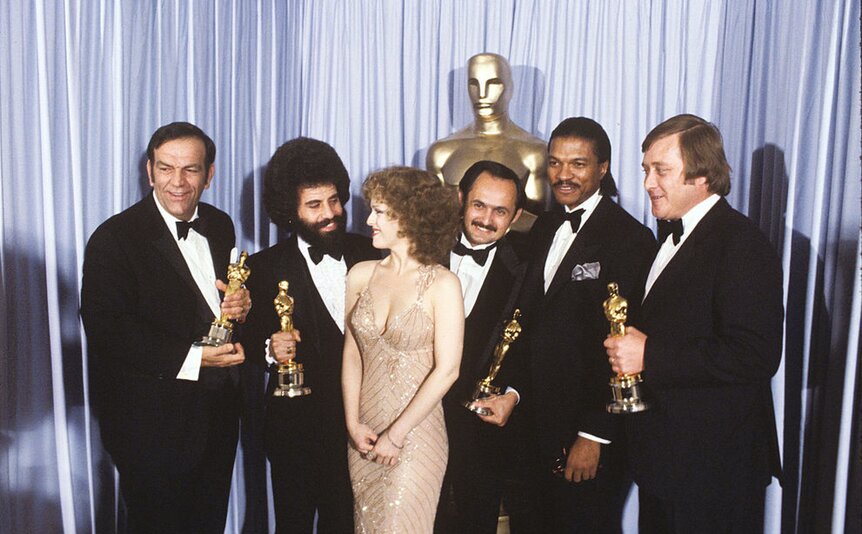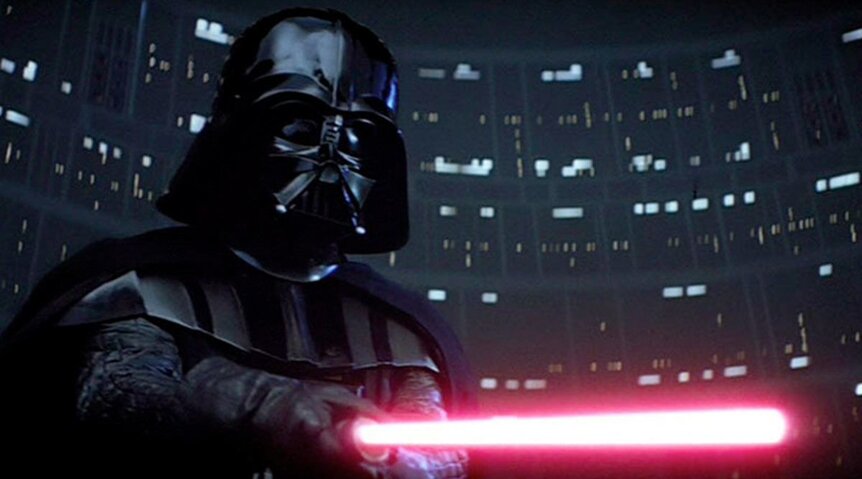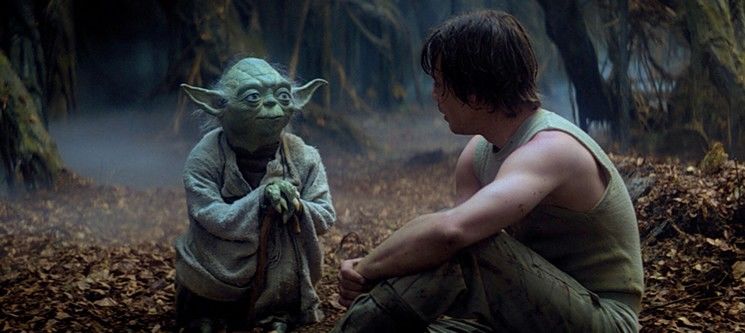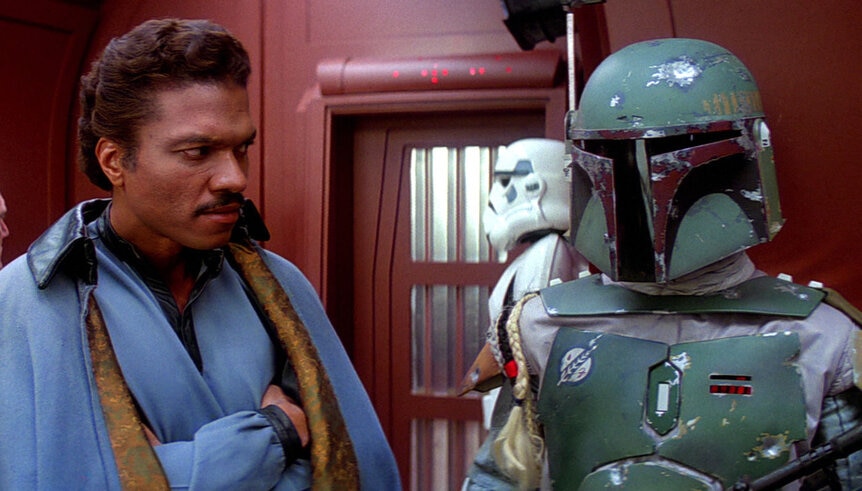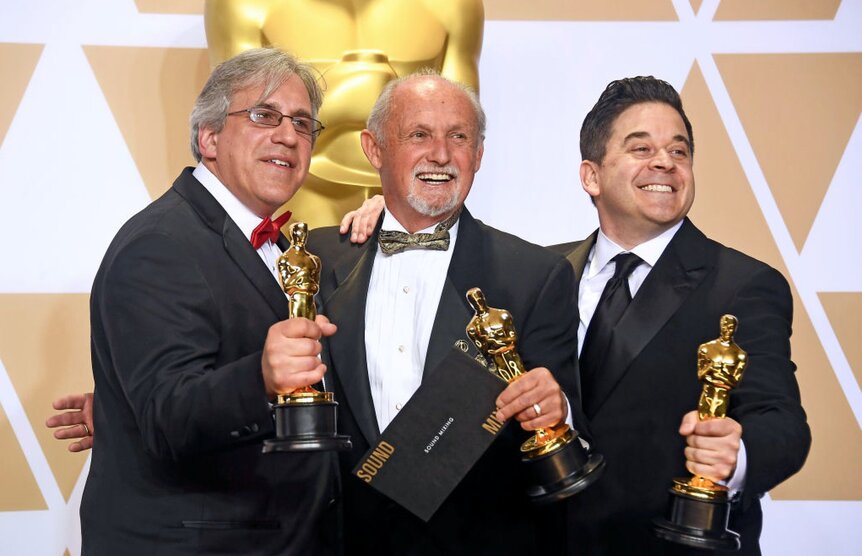Create a free profile to get unlimited access to exclusive videos, sweepstakes, and more!
Oscar-winning sound editor Gregg Landaker recalls the sonic magic of Star Wars: The Empire Strikes Back
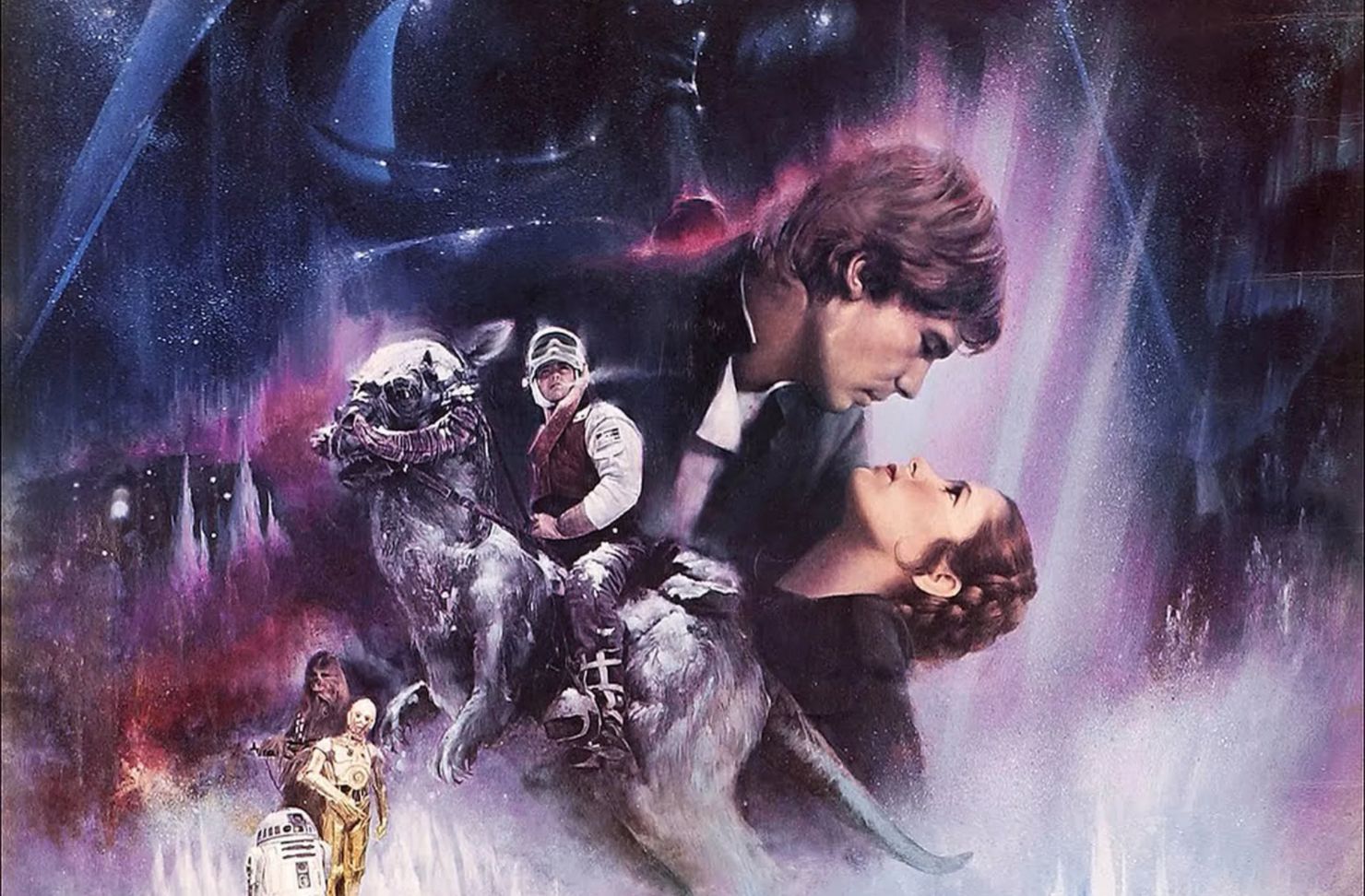
Sound design in film has come light years since Al Jolson belted out his tunes in The Jazz Singer back in 1927, delivering movie audiences into the Age of Sound. Technological advancements in recording techniques and equipment took a monumental leap forward at the end of the '70s with the advent of Dolby Stereo and multi-track mixing to create a more dynamic viewer experience.
In 1977, Star Wars set a sterling example for Tinsel Town sound with a booming, immersive theatrical odyssey, and its blockbuster sequel, Star Wars: The Empire Strikes Back, raised the bar infinitely higher.
To help celebrate the myriad achievements of The Empire Strikes Back on its 40th anniversary, SYFY WIRE chatted with four-time Academy Award winning audio engineer Gregg Landaker, a veteran sound editor and re-recording mixer of 207 feature films.
Landaker won an Oscar for Best Sound for his work on The Empire Strikes Back alongside his esteemed colleagues Bill Varney, Steve Maslow, and Peter Sutton, who provided the classic space opera with a fluid tapestry of dialogue, music, and sound effects that still resonates today.
After capping a stellar career by taking home a fourth gold statue in 2018 for his work on Dunkirk, Landaker retired, ending his long Hollywood journey having worked on dozens of iconic films, including Star Wars, Star Trek: The Motion Picture, The Empire Strikes Back, Raiders of the Lost Ark, Halloween II, The Thing, Beetlejuice, Misery, The Addams Family, Speed, Twister, Waterworld, The Dark Knight, Godzilla, Interstellar, and The LEGO Batman Movie.
Blast back to the '80s in the interview below, as this veteran sound wizard recalls working with George Lucas and director Irvin Kershner on arguably the finest Star Wars film in the galaxy.
In honor of its 40th birthday, can you recall how you came to work your sound magic on The Empire Strikes Back?
We lucked out! Bill Varney, Steve Maslow, and I were a team over at Goldwyn Studios back in that day. Lucky enough, we did More American Graffiti for George Lucas in 1978-79. It was fortunate that George liked it, he hadn't built his studio up north at that point. That's how we got involved with it. Really just the luck of the draw. Originally I was the sound recordist on the original Star Wars, so it felt like it was all in the family and it worked out very well.
What was it like working with a young George Lucas on the first Star Wars?
Going back then, I was the sound recordist up above operating the magnetic tape machine that recorded the sound that the mixers were sending up to the recorder. I was putting up all the sound reels and feeding them back down to the console and making sure the recording was proper. Because I knew the Dolby Noise Reduction System being in the transfer department, they said they needed me up there. We worked and worked, and I remember looking out the porthole from the booth to see the screen. I remember seeing the opening titles, just the visuals of it, and we thought, "Oh my god, we've never seen anything like that before." It was the impression of the visuals of it, the creative soundtrack.
I was a youngster at that point and George was with his corduroy jeans and a Pendleton shirt and a '68 Camaro out by the stage. We'd sit down and just chat about life. I look back on that now and think, "Wow, that was so strange."
Did you ever have an inkling that Star Wars would become the global phenomenon it would?
Yes, I really did. For the amount of times I saw it over and over and over, reel by reel, you got a sense that this was so different and so exciting, not knowing it would go into the huge toy industry and down that road. But as far as a cinematic, feature film, audience participation, and to see something of that magnitude come on screen, there was nothing like it. We had our Lawrence of Arabias and stuff like that, but this was different, because George was trying all these new techniques with camera moves and seeing it on the big screen was amazing.
Why was the sound design of The Empire Strikes Back such a revolutionary leap forward?
I would say one of the bigger developments is that speaker systems started to get better at all the theater chains. Many still had the old loudspeaker systems behind, and they got into the hip way of installing professional home speaker-style systems and crossover networks. The low end frequencies started coming up and it took a little more top end. We mixed the film for a 70mm release. Back on Star Wars they were thinking of only a two-track Dolby Stereo mix, where we were thinking of a five-track setup for 70mm. We were going through lots of technological changes with the type of consoles we used, magnetic film started getting better to record to, and using multiple recorders.
Today's mixing is non-linear, where back then we had to rehearse ourselves for each reel, just like an actor rehearsing a scene. We'd rehearse for five or six hours, go to lunch, come back, take a few more passes with all our copious notes. At 280 feet the Millennium Falcon is gonna come in, so I had to have this fader group at this level. It was very rudimentary style mixing compared to today's standards. George, producer Gary Kurtz, and director Irvin Kershner allowed us a lot of freedom. They enjoyed coming in, not picking things apart, but they'd come back to see how it hit them emotionally. Then we'd take down those notes and make the changes.
As a re-recording mixer, how do you best describe your job?
Bill [Varney] handled all the dialogue tracks and we re-recorded them onto a piece of film that now you can handle easily on a final dub. I handled all the sound effects, hundreds of them. Steve Maslow had Johnny Williams' score in his hands. Bill had all the ADR and dialogue in his hands. Think of it as painting with sound. You have a blank canvas up there on the screen if you ran it silent. How do you paint that picture to make it turn to reality for an audience?
And that's it. It's the dance between this dialogue and this music cue and this sound effect, and when to make the Millennium Falcon sound like it just went over your head hard and fast. When to back it off to let the musical score breathe and then it becomes an emotional attachment to the screen. Into the dialogue where you soften things down so you focus your audience's energy to listen to the dialogue. Then you can scare them with some offstage thing like a bomb explosion or a laser blast. Our job is to achieve the director's vision coming off that screen.
What do you recall about George Lucas on this sequel versus the first Star Wars, and how did you get along with the notoriously grumpy Irvin Kershner?
They were pretty hands off. Gary Kurtz and Irvin Kershner leant to George's vision. They kind of let George run with the three of us on the stage. George was, and still is, the most likable guy. I saw him years later up at the ranch when I was working on The Godfather III and I went up to the lunch room. He's still the same person that I used to sit around with leaning against his tire in the Goldman parking lot talking about life. Irvin was a tall imposing man and he did have a stern look about him, but we never felt he was grouchy.
On our stage, we just wanted them to be engaged and happy about what they're doing. You need to be a social director, party planner, and personality reader real quick.
How did it feel strolling up on stage with your team to receive your first Academy Award for The Empire Strikes Back?
It was almost like a dream. We were young kids back then, we were just happy to be working. You hear your names announced, and they start playing that music, and you kiss your wife and walk down the aisle and go up to the microphone and turn around and see this sea of people and the bright lights are in your face. Then you wonder what you're gonna say to millions of people. I never rehearsed a speech or anything, so you come up with the best you can at that moment. We were lucky enough to go to the party nine times, but you have more losses than wins.
For Dunkirk, I was much more prepared. The excitement was still there. I was still that young kid when I first won as I was when I was retiring. We were blessed to be at the right time in the industry and savvy enough to jump on board with all the technical changes along the way. The industry was very kind to me.
Why does The Empire Strikes Back hold up so strongly, and why do you think it became many fans' all-time favorite in the saga?
We obviously didn't know it would eventually become the favorite. But we knew it was a darker film, and it had our touch on it. Bill, Steve, and I. And we had a magic team. There was a magic to our mixing in all the stuff we did back then, whether it was Star Wars or Raiders of the Lost Ark or any of the films we did. We had a good sense of artistry to put on the screen.
George was very happy with it, because we heard that when he did Return of The Jedi, after he'd built Skywalker Ranch up north, he'd said, "My god, how come this film doesn't sound like Empire." Well, it was a totally different team. [laughs]
It was a fun film to work on. It was not a lot of screaming and yelling trying to get the sound correct on the screen. It was a dance and a nice flavor, it really was.
